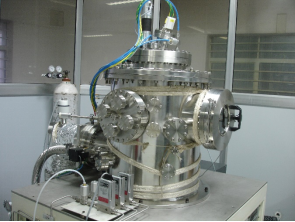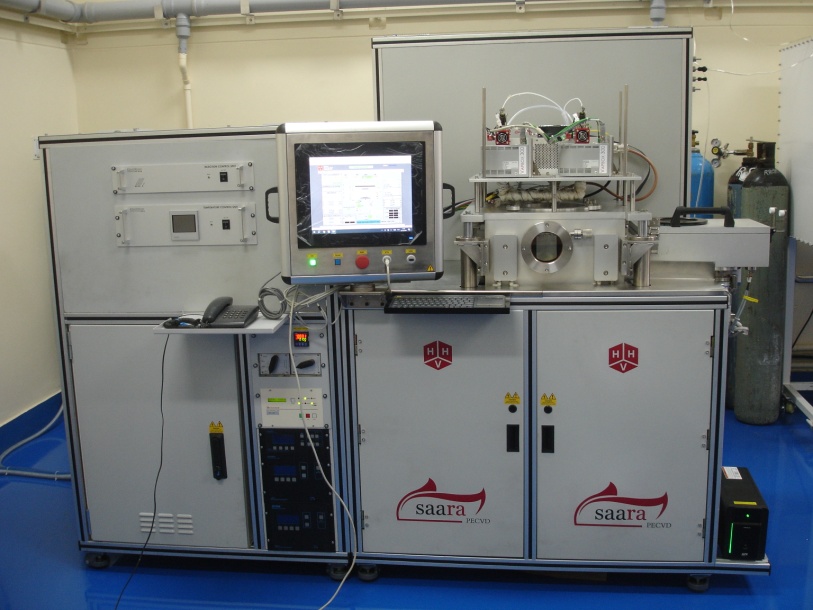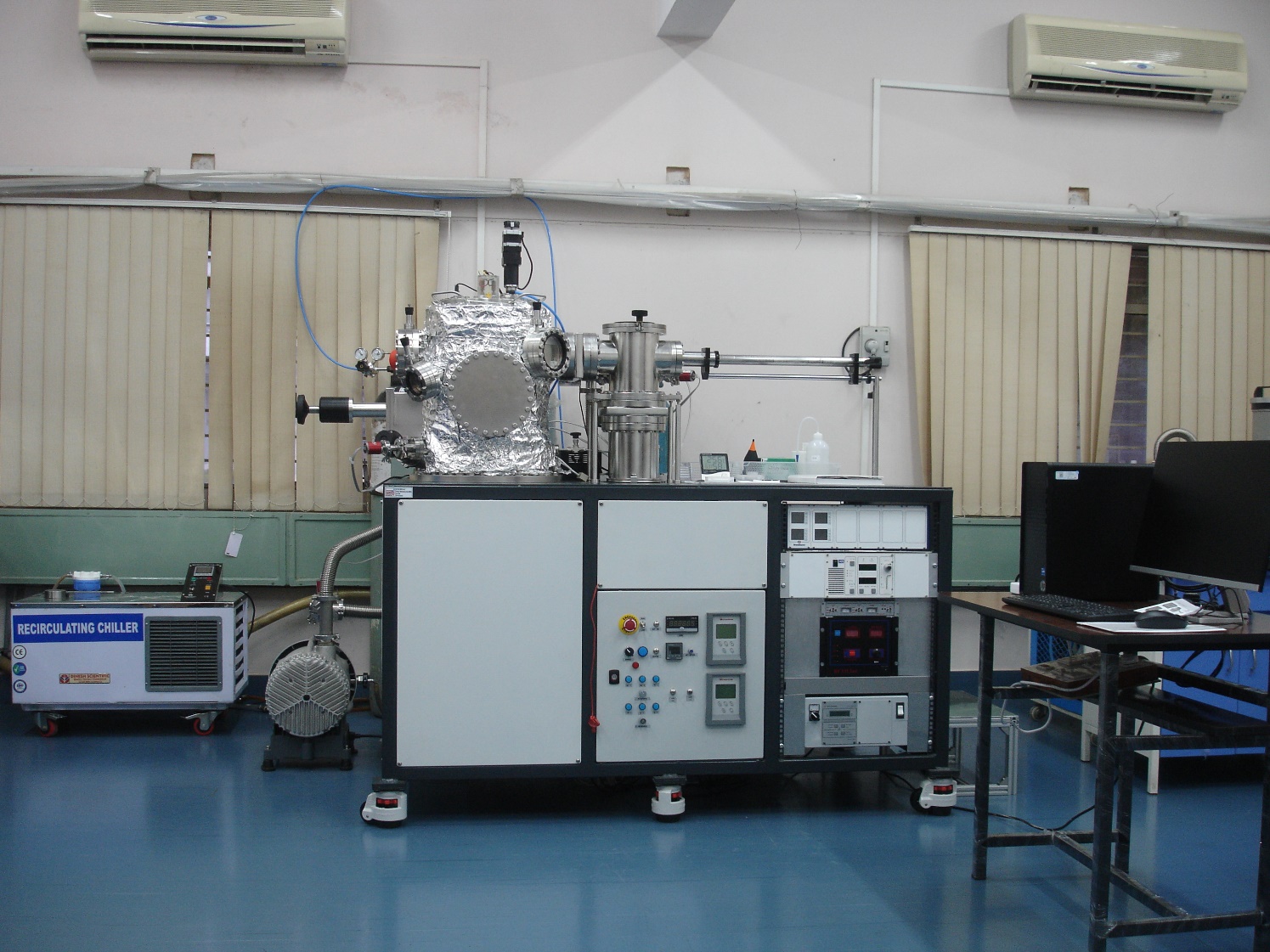Optical Coatings Laboratory is involved in design and development of thin film coatings on various specialized optics. Specialized optical coatings are important for laser-based R&D and spectroscopic studies and also help in considerably enhancing the efficiency and hence usefulness of various industrial and high-power laser systems being developed in RRCAT. Such components are also required for development of specialized optical systems for laser-based instruments. Development of large area optical coatings with high performance uniformity and high damage threshold as required for the development of high-power lasers are being carried out. For this, a state-of-the-art dual ion-beam sputtering facility has been setup to make extremely dense, smooth multilayer films with very high laser damage threshold.
In order to achieve desired optical performance of optics single layer or multilayer coating of alternate high and low refractive index layers are required. For these following deposition facilities are currently being used;
ion-assisted e-beam evaporation deposition system:
It consists of two independent e-beam guns (each 10 kW , 4x15 cc crucibles, sweep etc.), one broad beam ion source (40 – 210 eV, 0 – 7 A, gases: O2 & Ar), planetary substrate rotation ( 4 x 100 mm dia. substrates), in-situ optical and physical thickness monitoring, etc.

Photograph of ion-assisted electron beam deposition
|
Sputter deposition system:
It consists of two tiltable sputter cathodes in confocal geometry, simple substrate rotation (1 x 150 mm dia. Substrate), in-situ physical thickness monitoring, substrate heating and cooling, DC, RF, Pulsed DC sputtering, ion assisted cleaning and deposition etc.

Photograph of sputter deposition
|
Dual ion beam sputter deposition sustem:
The system is equipped with two ion sources; one for sputtering from a target and the other for cleaning, oxidation and densification of films. Four oxide targets are used to grow multilayer oxide coatings. Four substrates, each 150 mm dia. can be accommodated and are rotated in a planetary configuration. In-situ optical and physical thickness monitoring are done during deposition.

Photograph of Dual ion beam sputtering deposition
|
Plasma Enhanced Chemical Vapor Deposition (PECVD) system with Direct Liquid Injection (DLI):
The PECVD with DLI system will be used for single and multilayer interference coatings of dielectric materials (in the substrate temperature range of RT - 350oC) on insulating, semiconducting, and conducting substrates such as crystals (including KDP), glass, silicon, polymer, metals etc. The system is equipped with a Direct Liquid Injection (DLI) unit, which enables deposition of dielectric materials at low temperature.

Photograph of Plasma Enhanced Chemical Vapor Deposition system
|
Magnetron Sputter Deposition System (MSDS) with load-lock chamber:
Indigenously developed Magnetron Sputter Deposition System (MSDS) with load-lock chamber is used for reactive growth of nitride thin films with reliable rate of repeatability. MSDS is equipped with a cluster of three magnetron guns each having a target size of 2 inch in diameter. Substrates upto 4 inch diameter can be coated along with heating upto 800°C and 360° rotation during deposition. Composite nitride thin films, like aluminum nitride (AlN), boron nitride (BN), silicon nitride (Si3N4) and titanium nitride (TiN) with other metallic thin films are regularly deposited on various substrates.

Photograph of Magnetron Sputter Deposition System
|



















